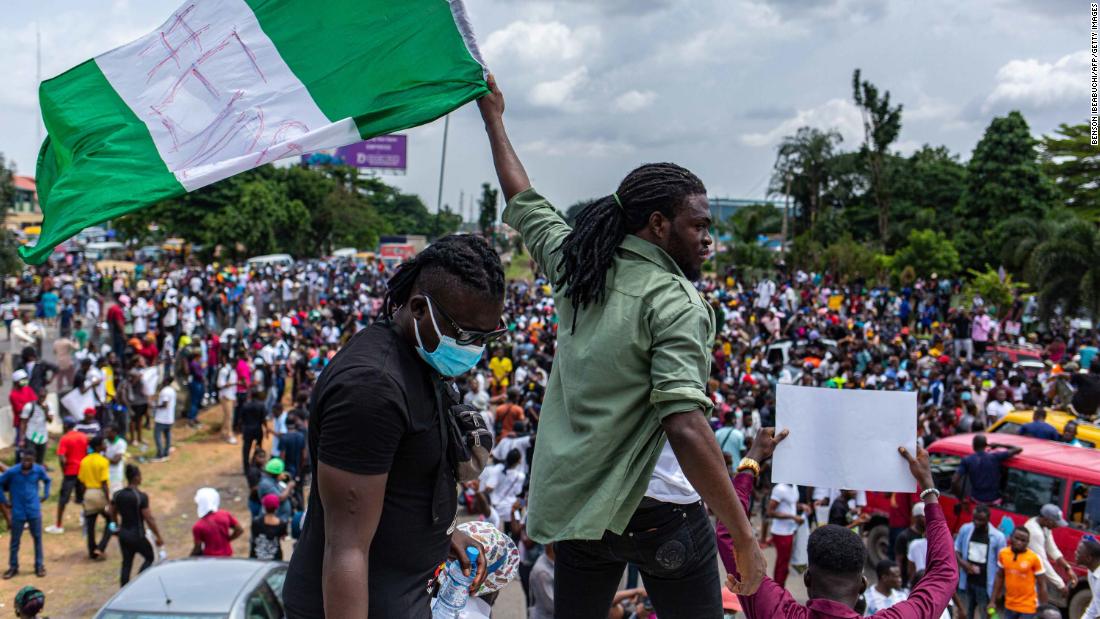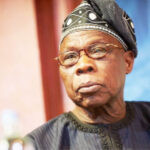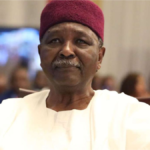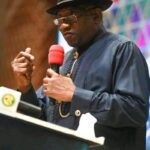On 30th June 2017, the column from yours truly was entitled: “No Need to Fight: Restructuring is the basis of happiness” I urged the government to establish and accelerate a process to meet the demands for political restructuring, which has been on the front burner for decades.
The process of restructuring is simple, we should look at our Constitution, agree on what we do not like and go ahead and replace what we do not like with what we like. The reality in Nigeria has been that at the emotive level, everything that is wrong or disliked has been reduced to the refusal of the State to restructure. Restructuring can therefore only lead to happiness.
- #EndSARS: Buhari sends Chief of Staff, others to states
- $1.2b Brazil loan: PDP taunts Buhari over ‘reckless’ borrowing
The core work about restructuring has been done by the numerous constitution conferences set up by the Obasanjo and Jonathan Administrations. To move the process forward, the Buhari Administration can make Nigerians happy by setting up an all-inclusive committee, (we cannot afford and we do not need another national conference), to summarise the key proposals and place them before Nigerians for debate and indications of what Nigerians prefer. These preferences can then be placed before a referendum.
What is important is that there should be a grassroots debate within and between communities on their preferences. The process should commence on a debate on the First Schedule of the Constitution, which defines the structure and composition of the Federation. The States of the Federation and the Local Government Areas that define them, as well as the Federal Capital Territory, are spelt out. The choices are very clear – reduce the number of states in the country by combining or merging them or increase the number by subdividing them as we had been doing since 1963 or 1967 depending on where we define the baseline. Secondly, we may want to dismiss the principle of how the states were constituted in the first place, which was done on the basis of the provinces created by the colonial administration. If we want to change the provincial-territorial structure, a new principle has to replace the territorial one – possible choices would include ethnicity, nationality and religion; the passions for which has led to a penchant for killing one another in our recent history. On local governments, we have to decide whether it should remain a federal definition or be addressed by federating units of the Federation. This of course poses the issue of whether the federating units should have their own constitutions, as was the case during the First Republic.
We should not forget that the assumption during the negotiations leading to Nigeria’s independence was that the adoption of a federal arrangement would provide a flexible arrangement that would satisfy the different components of the society. The central object of federalism, it should be recalled, is the extension and expansion of political space, autonomy and institutions to the benefit of geopolitical units in a context in which the political community accepts that ethnic, religious and cultural differences exist and that their management would benefit from differential levels of governance with substantial autonomy to each level.
The point of departure of the theory and practice of federalism therefore is that such differences are legitimate and should be accepted and incorporated into the structure of governance. The political systems of federal states are therefore constructed in such a way as to accommodate such differences. Institutions for managing the differences, for seeking compromises and for negotiating conditions for living together are therefore central to federal politics and when they no longer work they should be renegotiated.
From the First, we then have to move to the Second Schedule of the Constitution. We have a very long Exclusive Legislative List of 68 items on which only the federal government has the competence to legislate on. We need to review these items. Why can’t states fix Federal Truck Roads, arbitrate industrial disputes, join or dissolve statutory marriage or build prisons or have police forces, as is the case in most federal regimes? Let us review the List and refine it to our heart’s satisfaction. Reviewing the list, I notice that Article 52 of the Second Schedule gives the federal government exclusive powers to conduct: “public relations of the Federation.” The implication of this is that only one spouse in the union can talk positively of the marriage. Someone should explain to me why only one spouse in the marriage could talk of the union.
While the federal government has exclusive competence in 68 legislative areas, there is no exclusive list that defines areas in which the state governments alone have exclusive powers, as is often the case in federations. What we have is a Concurrent List of 30 items on which the federal and state governments can both act on. The list includes industrial, commercial and agricultural development, health and education. In many federal systems, these areas are for exclusive action by the federating units alone. Yes, let’s discuss them and decide what we want.
We know that the fact of the matter is that Nigeria has been restructuring since 1914, when the British amalgamated the three territories in the Nigeria area, the colony of Lagos and the two Protectorates to the North and South of the Niger. The problem of Nigeria is not so much the amalgamation of 1914, but the failure to forge a cohesive nation from the hitherto autonomous and independent entities after independence. Lord Lugard first structured Nigeria into a political system based on ‘indirect rule’ with a policy of non-centralised administration or ‘separate government for different peoples’. This policy led to the evolution of certain structures and institutions, which to a certain extent, still characterise the contemporary Nigerian State. The basic principle of “Indirect Rule” was ‘divide and rule’ which operated differently in the Emirates of Northern Nigeria, the Yoruba kingdoms, the South East and the Middle Belt, deepening the unhappiness.
In the North, traditional elites were fully involved in local colonial administration, thanks to the system of ‘Native Administration’ (NA) and were therefore allies in the administration of the British colonial system. Secondly, they had an understanding with the colonial administration to keep Christian missionaries and by implication, western education, out of the Emirates. The result was that the pace of development of Western education in the Muslim part of the North was very slow and the few that were chosen to participate in the Western education system were all employed in the NA. In the other parts of the country, Christian missionaries were given full freedom for proselytisation and, virtually, exclusive control of Western-education. It resulted in a fairly rapid evolution of a Western educated elite, to the detriment of traditional ruling elites. The new elite, however, had very limited opportunities of integrating into the upper echelons of the civil service even when they had high levels of education.
In 1938, the South was restructured into two regions, the West and the East, while the North was left intact – hence the origins of the tripartite political system. This system was formalised with the Richards Constitution of 1946. The Nigerian debate over restructuring started with the Richards Constitution. The Southern nationalists – Herbert Macaulay, Nnamdi Azikiwe and Michael Imoudu rejected the Constitution because it was designed to perpetuate the colonial structure of sharing power between the Crown and Native Authorities and mobilised for a new structure in which citizens would be the repositories of power. They travelled around the country, mobilised, raised funds and went to London in 1946 to demand for a new structure.
When five years later, they succeeded in placing self-government on the agenda with Governor Macpherson’s Constitution, the Nigerian political elite had agreed to a Federation based on the three-tier regional structure Lord Lugard had invented. In the process, the profound demand for democratic government in which power resided with citizens was abandoned. The guiding principle of this “new” tripartite Federation was that each Region had a ‘majority ethnic group’, which was to play the role of the leading actor – in the North the Hausa, in the West the Yoruba, and in the East the Igbo. The pre-independence restructuring was problematic because Nigeria was never composed of three cultural groups but of hundreds of cultural and ethnic groups competing with the three majority groups. Although Nigeria was profoundly multipolar, the Hausa-Yoruba–Igbo political elites opted to maintain the colonial tripartite structure. Against the recommendation of the Willinks Commission of 1958, the colonial administration refused to create more regions. This set in the sadness. Next week, I will conclude by presenting the proposals from Friends of Democracy that is guaranteed to bring back happiness as the outcome of our own indigenous restructuring based on the 12-State structure we invented.

 Join Daily Trust WhatsApp Community For Quick Access To News and Happenings Around You.
Join Daily Trust WhatsApp Community For Quick Access To News and Happenings Around You.

